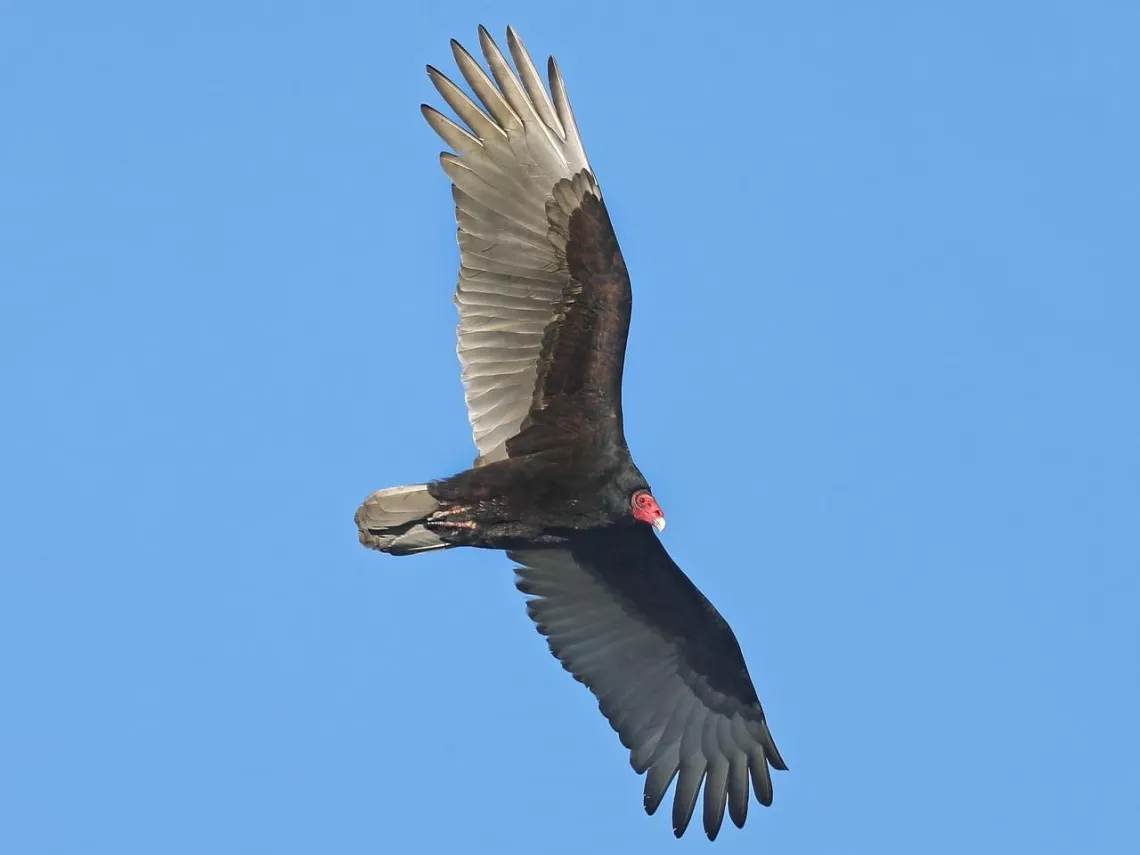Bob Suchanek, Water and Wetlands Steward

Photo Credit – National Park Service, Public Domain
“But how beautiful he looked, gliding down on those great sails…”- Robinson Jeffers, Vulture
The Turkey Vulture
Most people give this nearly eagle-sized member of the falcon order (Falconiformes) a bit of a bad reputation. The French called them vultures after the Latin vulturus, “the tearer”; the Ojibwa said we-nong-ga, “the one of filth”. I’m inclined to prefer the current scientific name Cathartes aura, derived from Greek and interpreted as “purifying breeze.” They restore the dead to the living world through dismemberment and consumption, facilitating their own lives and the lives of other beings.
Turkey Vultures are a welcome harbinger of spring in most of the United States, returning to their carrion feeding duties from southerly winter ranges. I often see these big birds soaring on rising hot air thermals over Minnesota during the warm months. They hold their wings up in a distinctive V shape that’s easy to tell from other vulture species and eagles.
My favorite nearby place to see Turkey Vultures up close is a roosting tree that a friend discovered along the St. Croix River in Wisconsin. Farther away and many years ago I stood on the edge of Glen Canyon near the dam that created Lake Powell and watched Turkey Vultures soaring above the Colorado River but close and below me, all of us suspended in the warm desert air.
A Dinosaur and the Turkey Vulture
Does anyone remember the movie The Lost World: Jurassic Park?
Here’s a bit of dialog:
Dinosaur enthusiast Sarah Harding: “Tyrannosaurs got the largest proportional olfactory cavity of any creature in the fossil record with the exception of one.”
Paleontologist Dr. Robert Burke: “Right, right, the uh, turkey vulture. Could scent up to ten miles.”
Harding and Burke were right; Turkey vultures can smell their next meal. Dead animal bodies stink. One kind of similar stinky compound is added to natural gas to alert people to leaks, a fact noted by Turkey Vultures and pipeline employees who keep an eye out for the vultures over their pipelines.
Some sources:
https://www.allaboutbirds.org/guide/Turkey_Vulture/overview#
Birds of Algonquin Legend by Robert E. Nichols, Copyright 1955 by the University of Michigan
Birds of North America, A Guide to Field Identification, Copyright 1966 by Golden Press
National Audubon Society Field Guide to North American Birds, Copyright 1995 by Chanticleer Press